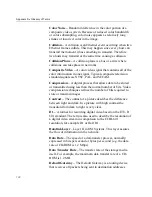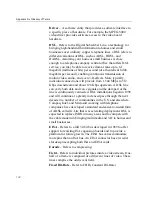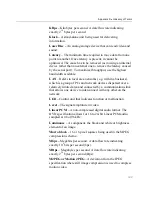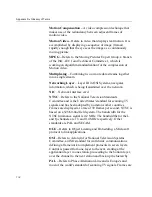
Appendix D
•
Glossary of Terms
I Frames –
Intra Frames, which are key reference frames in the
MPEG compression algorithm. I-frames contain all the data
needed to represent an entire frame,
IGMP –
Refers to the Internet Group Management Protocol, an
Internet protocol that provides a way for an Internet computer to
report its multicast group membership to adjacent routers.
Multicasting allows one host computer on the Internet to send
content to multiple other computers having identified
themselves as being interested in receiving the transmitting
computer's content. These networks enable streaming to an
audience being "tuned in" by setting up a multicast group
membership without interfering with those users not being
tuned in.
Image –
A still picture or one frame of a motion sequence.
Interleave
–
An arrangement of audio and video data inside the
file.
Interpolation
–
Scaling the image from a smaller size to a
larger size while intelligently creating new pixels.
ISO –
Refers to the International Standards Organization, the
governing body that creates standards.
IP–
Refers to the Internet Protocol used along with the
Transport Control Protocol (TCP) to send data divided into data
packets over the Internet. While TCP keeps track of the
individual data packets, IP handles the actual delivery of the
data.
Jitter –
This is the difference of the latencies between two data
packets and can cause real-time data packets to arrive out of
order.
JPEG
(Joint Photographic Expert Group) –
An ISO
committee formed to develop the standard for the compression
of still images.
Kbps –
Kilobits per second. A data flow rate indicating exactly
10
3
bits per second.
132















































